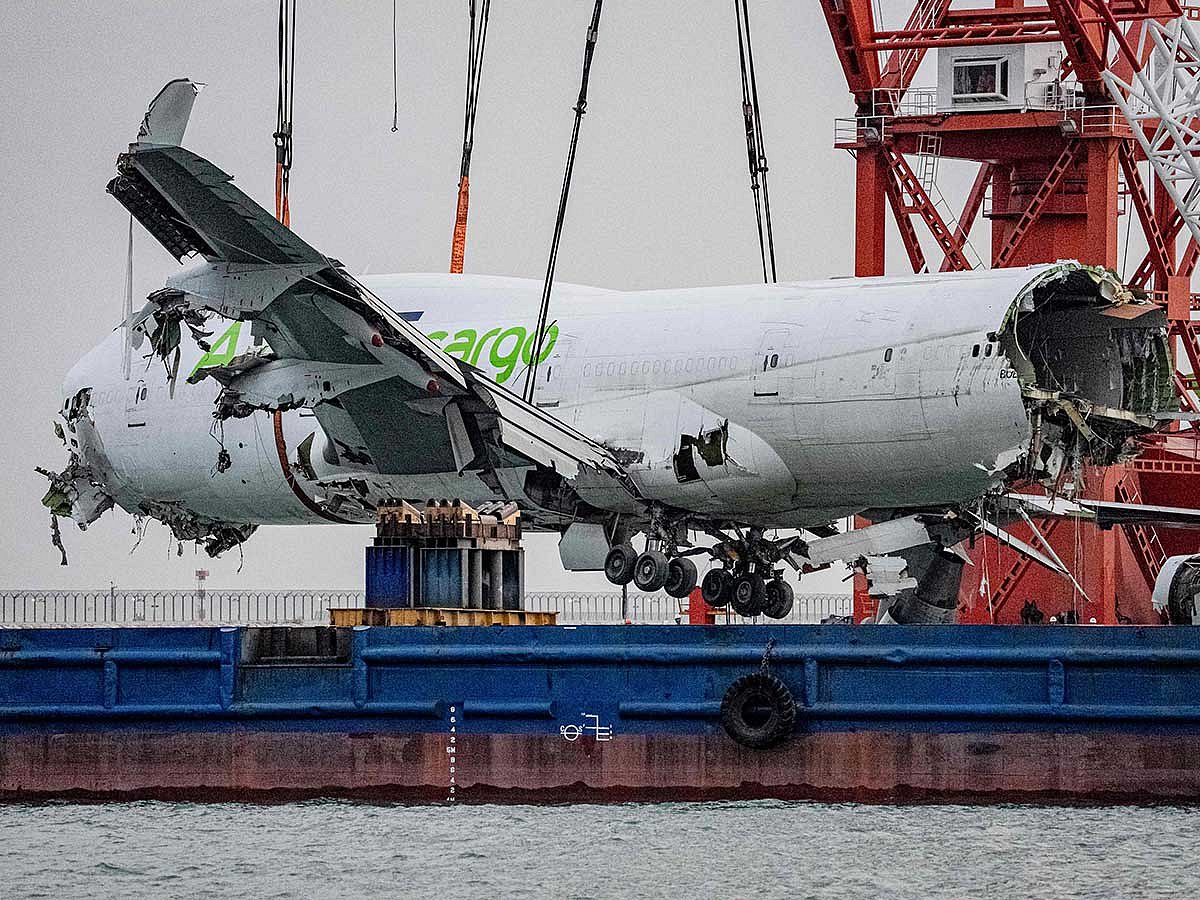Salvage completed for Boeing 747 freighter leased by Emirates after Hong Kong runway crash
The AirACT 747-400 freighter overran the runway at HongKong International Airport

Authorities have recovered most of the AirACT Boeing 747-400 cargo freighter that overran the runway at Hong Kong International Airport early on October 20, 2025.
The aircraft, which was operating under a wet-lease for Emirates SkyCargo, veered sharply left upon landing on Runway 07L at approximately 3:53 am local time, striking an airport patrol vehicle and pushing it into the water, resulting in the deaths of two ground personnel.
The wreckage was partially submerged in the sea, with the tail section and both flight recorders recovered from the water by October 24.
A marine salvage barge lifted the main fuselage on October 26. Authorities completed the recovery operation by October 27, as per Aviation Week.
The aircraft's fuselage came to rest in the water with its tail detached, and the incident marked Hong Kong’s deadliest aviation accident since 1998, as per Flight Radar 24.
The aircraft involved was a Boeing 747-481BDSF, registered as TC-ACF, first delivered in 1993 and converted to a freighter in 2011.
It was operating from Dubai to Hong Kong when the accident occurred. The collision resulted in the deaths of two airport security staff members, a 41-year-old and a 30-year-old, who were inside a patrol vehicle that the aircraft struck.
The Hong Kong Airport Authority confirmed that the main runway was temporarily closed during salvage operations but that the airport's other runways remained operational, with flights continuing normally. Investigations into the incident are ongoing, with authorities analysing flight data, pilot actions, and mechanical factors.
The accident is under close scrutiny by local and international agencies, including the Hong Kong Civil Aviation Department, the U.S National Transportation Safety Board, Turkey’s Transport Safety Investigation Center, and Boeing, all collaborating on the investigation. With the flight recorders recovered, and the main fuselage lifted, it would offer critical data for the Air Accident Investigation Authority’s upcoming report.
Similar incident
The AirACT 747-400 incident echoes a similar runway overrun by China Airlines Flight 605 in 1993 at Hong Kong’s Kai Tak Airport, highlighting recurring challenges with Boeing 747-400 landings in the region.
Flight 605’s crash during a storm exposed pilot training gaps, leading to revised manuals, a lesson now under scrutiny as investigators probe the AirACT accident’s cause.
AirACT, formerly MyCargo Airlines, is a Turkish charter cargo operator, adding an international dimension to the investigation involving multiple aviation regulators.
The detached tail section’s recovery could reveal structural insights, especially given the 747’s history of tail-strike incidents during landings.
Sign up for the Daily Briefing
Get the latest news and updates straight to your inbox
Network Links
GN StoreDownload our app
© Al Nisr Publishing LLC 2025. All rights reserved.